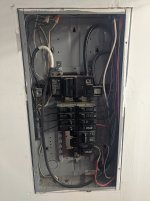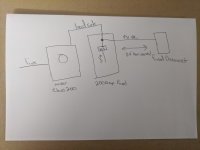live4soccer7
Member
- Location
- US
- Occupation
- Engineer & Business Owner
I have designed a larger residential PV system and have come up to a hurdle that I'm not quite sure how to tackle. The system outputs about 190A @240v at peak production. For 125% rating of that it would come out to a panel needing to be rated at: 237.5A. This automatically puts me into the 400A panels. The panel closest to the original PUD meter is a 200A panel, so I can not simply backfeed this panel as it is not rated high enough.
My solution is to use a load center after the inverters to "combined" the 3 inverters where each inverter will have an 80A breaker (sized based on inverter documentation). Then to go into the 200A panel and tapping "top side" or above the 200A breaker. There aren't lugs or anything like that in the 200A panel on the topside that I could utilize. What would be an NEC appropriate way of going about this?
This is kind of one of the last pieces to my puzzle, at least for now. Any input would be extremely helpful.
My solution is to use a load center after the inverters to "combined" the 3 inverters where each inverter will have an 80A breaker (sized based on inverter documentation). Then to go into the 200A panel and tapping "top side" or above the 200A breaker. There aren't lugs or anything like that in the 200A panel on the topside that I could utilize. What would be an NEC appropriate way of going about this?
This is kind of one of the last pieces to my puzzle, at least for now. Any input would be extremely helpful.



